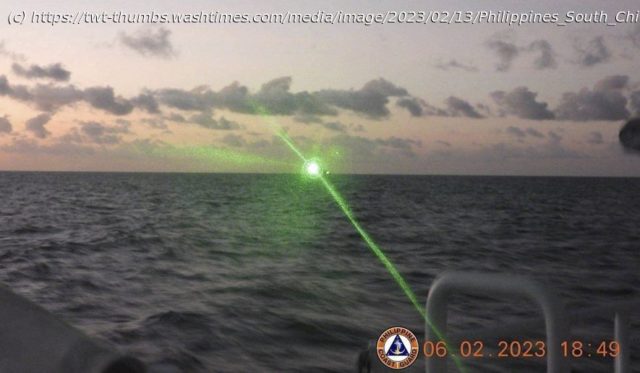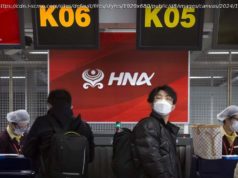Array
The State Department this week said China engaged in a provocative and dangerous laser attack on a Philippines coast guard ship during an incident in the South China Sea.
China’s action amounts to “dangerous operational behavior” that directly threatens regional peace and stability, department spokesman Ned Price said in a statement.
“The United States stands with our Philippine allies in the face of the People’s Republic of China (PRC) Coast Guard’s reported use of laser devices against the crew of a Philippine Coast Guard ship on Feb. 6 in the South China Sea,” Mr. Price added. “The PRC’s conduct was provocative and unsafe, resulting in the temporary blindness of the crewmembers of the BRP Malapascua and interfering with the Philippines’ lawful operations in and around Second Thomas Shoal,” he said.
Mr. Price also stated that any armed attack on Philippines military forces, public vessels, or aircraft — including coast guard vessels — will trigger Article V of the 1951 U.S. Philippines Mutual Defense Treaty. The article covers responses to armed attacks.
It was the second time the treaty provision was publicly invoked by the United States. In 2019, then-Secretary of State Mike Pompeo announced that U.S. forces would defend the Philippines in the event of a Chinese attack.
Up to that point, the U.S. government had said it took no position on territorial disputes in the South China Sea.
Mr. Price also contended that Beijing is infringing on freedom of navigation in the South China Sea that is guaranteed by international law. China’s failed attempt to claim sovereignty over the South China Sea was rejected in July 2016 by an international tribunal in the Netherlands, he noted.
“The People’s Republic of China has no lawful maritime claims to Second Thomas Shoal,” Mr. Price said. “The United States reiterates, pursuant to the 1982 Law of the Sea Convention, the 2016 arbitral decision is final and legally binding on the PRC and the Philippines, and we call upon the PRC to abide by the ruling.”
China rejected the tribunal ruling and continues to insist it owns some 90% of the sea.
China has used lasers against U.S. aircraft in the past and despite the incidents being considered hostile action, no military responses were made beyond filing diplomatic protests.
In February 2020, a Chinese warship fired a military-grade laser at a Navy P-8 anti-submarine warfare aircraft over the Pacific Ocean in what the U.S. military called an unsafe and unprofessional move. Chinese military forces operating out of a base in the East African nation of Djibouti were also blamed for injuring two U.S. aircrew by firing a laser at a C-130 transport in 2018.
Military laser dazzlers emit beams of light capable of traveling long distances that illuminate the cockpits of aircraft or the bridges of ships, temporarily blinding crews.
The Manila government said Monday a Chinese coast guard ship fired a military-grade laser and temporarily blinded some of the crew.
The incident involved a Chinese ship sailing close to the Philippine patrol boat BRP Malapascua, in an attempt to block it from approaching Second Thomas Shoal.
The shoal is a submerged reef occupied by Philippine forces on Feb. 6, the Philippine coast guard said in a statement.
“The Chinese ship illuminated the green laser light twice toward the BRP Malapascua, causing temporary blindness to her crew at the bridge,” the statement said. It was the first time the Chinese employed lasers and caused injuries to Filipino personnel, the Associated Press reported.






